Free bus travel for under-22s in Scotland begins
- Published
- comments
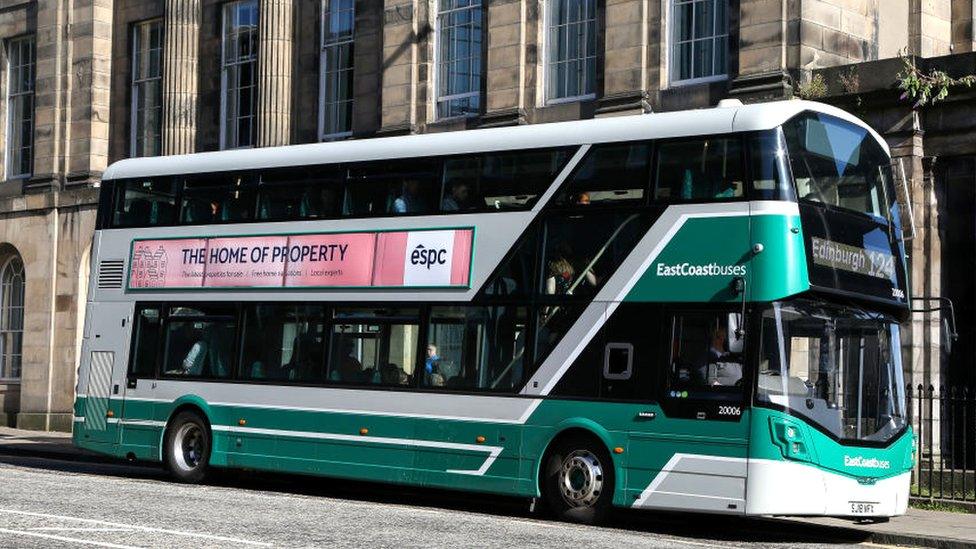
Free bus travel for everyone under 22 in Scotland is to begin from 31 January.
It's part of a scheme that was agreed under last year's SNP/Green budget deal at Holyrood.
But many parents and young people have reported problems in applying for the new passes needed.
BBC Scotland looks at how the new scheme will work, and some of the issues it's facing.
Who will get it under the new scheme?
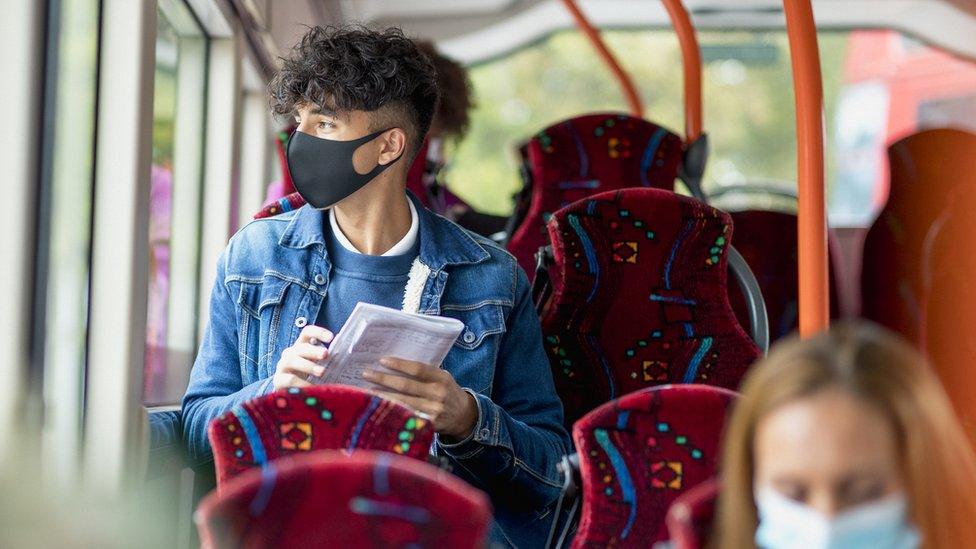
Free bus travel for everyone in Scotland aged under 22 will begin on 31 January.
This will cover about 930,000 people.
However, because of the pandemic, the Scottish government was asking only those with an essential need to travel by bus to apply before 31 January.
It said examples of essential need might be for "work, education, health or care reasons".
From 31 January, everyone eligible is being encouraged to apply.
As of Sunday 30 January, 117,082 applications had been made, with 55,375 passes dispatched.
There were 22,184 applications rejected - for example, for including wrong or expired documents, a picture which didn't meet the guidelines, or where the information on the application doesn't match the information on the documents.
Currently 45,574 applications are still being reviewed.
Who was already entitled to free bus travel?
About a third of the population were already entitled to free bus travel through schemes for older and disabled people.
And children under five already travel for free on buses.
The Scottish government says the new scheme means that more than 2.3million people will be able to travel for free on buses in Scotland.
How will the scheme work?
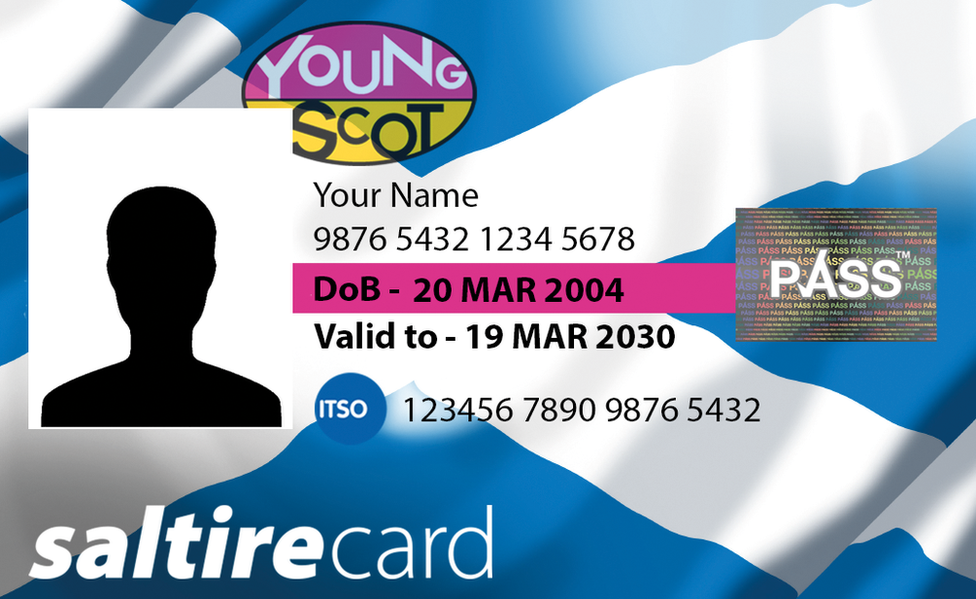
If you live in Scotland and are between five and 21 years old, you can apply for a card which entitles you to free bus travel.
Transport Scotland says to get free bus travel, you'll need a (new or replacement) National Entitlement Card (NEC) or Young Scot National Entitlement Card (Young Scot NEC).
Previously issued cards will not work.
The new cards will be smart cards. They will have a blue circle on them which says "ITSO", and will automatically recognise that you are part of the scheme - no matter which bus operator you are using or where in Scotland you are.
Passengers will have to tell the bus driver where they are going and tap their card on the card reader.
Learn more about how you can apply for the scheme, external.
Application problems
The Scottish government says tens of thousands of people have already applied and received their card.
However, some have reported difficulty applying for the scheme - and much of that spans from the identification verification process.
Parents must apply for those under 16, but those over 16 must apply themselves.
Multiple pieces of ID are required - although the exact requirements vary depending on who is applying. They include variations of passports, birth certificates, pictures and proof of address - for the parent and the child.
Applicants without photo ID are being urged to contact their school or local council.
Transport Scotland said it understood that the application process seemed complex, but it needed to ensure it complied with identity verification standards and to ensure the safety of children.
However, it said it would take on board the feedback from parents and use it to develop the application process.
In some local council areas, schools are coordinating applications on behalf of their pupils.
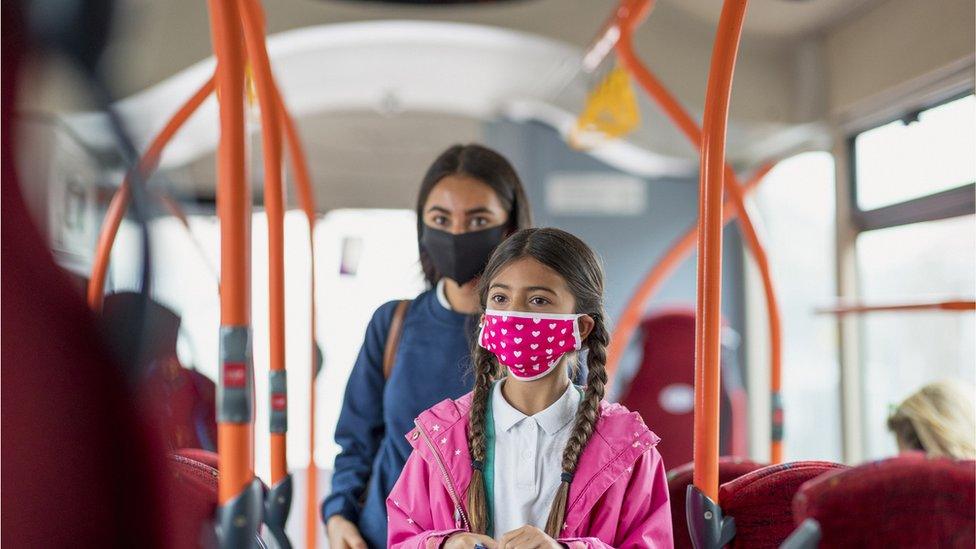
Jackie Mackay from Drymen in Stirling said she was "losing the will to live" when trying to apply for passes for her two sons.
She had to apply for two, as her sons were both under 16 at the time when she originally applied.
After a lengthy application process where she had to provide birth certificates, proof of address and scans of passports and Young Scot cards, she was told that the application had been rejected because her ID could not be verified.
In the end, she gave up on the application for her older son - which was complicated by the fact it was close to his 16th birthday. She decided to wait and get him to apply himself after his birthday.
Applying for her 14-year-old took more than an hour, and it was 10 days after this had been sent off she was told her own ID had been rejected.
"It was such a footer. They've both got Young Scot cards, with photos and their dates of birth on them - why is that not good enough?" she said.
The "principle is fantastic," she added - it would allow her boys to independently visit friends around Stirlingshire - but she said the application process had to be simplified, adding: "I don't know why they need so much verification."
How will free bus travel be funded?
The Scottish government will pay bus companies for each individual journey made.
The payment value will be a percentage of what an adult single fare would be.
For journeys made by five to 15-year-olds, bus companies will get 43.6% of an adult single far.
For 16 to 21-year-olds, they'll get 81.2%.
Bus companies will be paid for the journeys in the same way they're paid for the journeys taken on similar schemes which already operate for older and disabled people - although for journeys by these groups the percentage paid is 55.9%, to reflect the different fare types and travel patterns for these groups.
How did the scheme come about?
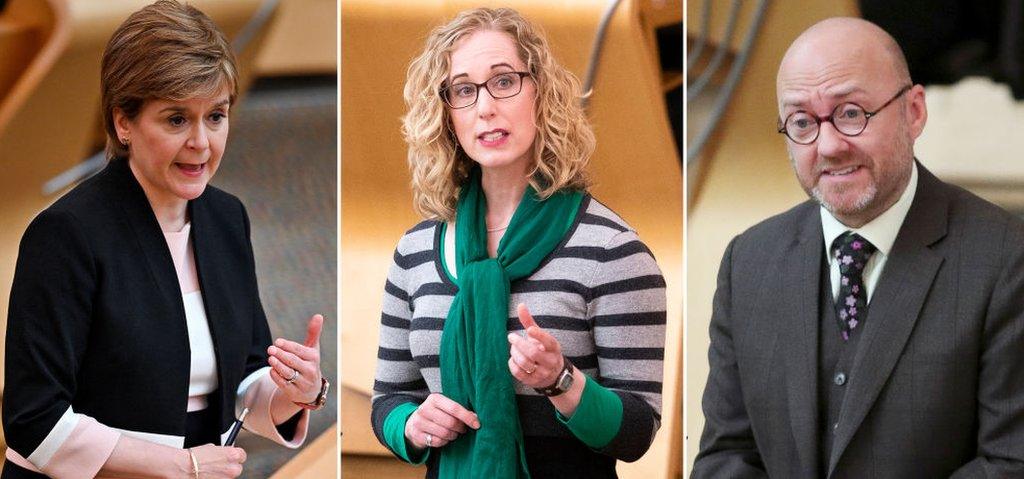
The free bus travel scheme for under-19s came about as part of an SNP-Green budget deal in 2020.
It was due to be introduced in 2021, but was delayed due to the Covid pandemic and a shortage of silicone for the concessionary cards.
Extending the scheme to under-22s was part of the budget deal agreed in March 2021.
The Greens campaigned for the policy in the hope that it will help lower car use, so be for the climate emergency.
Transport Minister Jenny Gilruth said the new scheme would help reduce car use and support local bus services to recover from Covid restrictions.
"Extending free bus travel will make public transport more affordable, and help give many young people wider access to more education, leisure, and work opportunities," she added.
"It will also support the choice to travel sustainably early in their lives."


Many young Scots face a challenge just to get around. Average UK petrol prices soared by 24% last year, putting car ownership beyond the reach of many, and doing much to fuel the cost-of-living crisis.
Meanwhile, public transport has seen inflation-busting price rises over recent years. Key services were cut during the pandemic, and are yet to return.
Can free bus travel for under 22s make a difference? A similar scheme for over 60s and the disabled has certainly helped. Since 2006, hundreds of thousands of Scots have had unlimited free travel on most bus services in Scotland. That's cut the cost of commuting, and it makes a trip to the shops or a visit to see loved ones affordable for those on low incomes.
The promise of free bus travel for under-22s was a big offer to younger voters, at a time when public spending is increasingly skewed towards services for the older generations.
The plan has the added impetus of helping combat the climate crisis - with the government wanting to get more people out of cars and onto public transport.
But Scotland's bus service is patchy, at best. And year on year we've seen fewer buses operating across fewer routes.
So, if the "right" to free bus travel is to mean anything, the network needs to improve.
New legislation aims to boost local bus services. But campaigners say Scotland needs to do more - by sweeping away the deregulated bus network.
Some parts of Europe have gone further still. The French city of Dunkirk offers entirely free bus travel for everyone.
For now, that's off the agenda here. But some think it's what Scotland should be aiming for.
